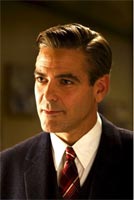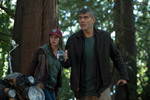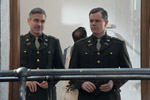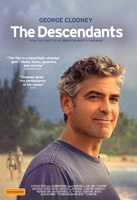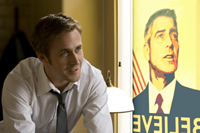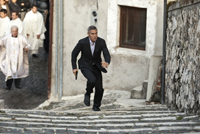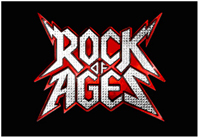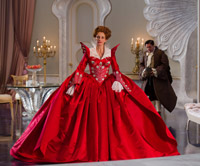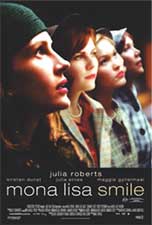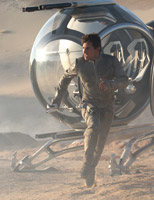Julia Roberts Money Monster
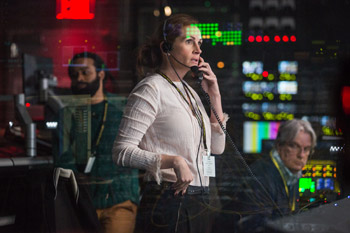
Julia Roberts Money Monster
Cast: George Clooney, Julia Roberts, Jack O'Connell, Dominic West, Giancarlo Esposito, Caitriona Balfe
Director: Jodie Foster
Genre: Drama, Thriller
Synopsis: In the high-stakes thriller Money Monster, George Clooney and Julia Roberts star as financial TV host Lee Gates and his ace producer Patty, who are put in an explosive situation when an irate investor who has lost everything (Jack O'Connell) forcefully takes over their studio. During a deadly standoff broadcast to millions on live TV, Lee and Patty must work furiously against the clock to uncover the truth behind a tangle of big money lies – while also keeping themselves and their crew members alive in the process.
Money Monster
Release Date: June 2nd, 2016
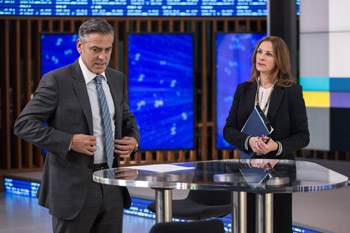 About The Production
About The Production
'I love this movie because it has two things that sometimes people think are opposites," says Jodie Foster, who directs the thriller Money Monster, starring George Clooney and Julia Roberts. 'One is that it's a mainstream thriller that's exciting, fast-paced, smart, and yet, still has a real accessibility. The flip side, which is the most important reason to go to the movies, is that you're moved by a real story. It's incredibly relevant."
'To me, the most exciting part of the story, in addition to the cops, helicopters, guns, bombs, and fast-paced excitement," Jodie Foster continues, 'is how this man, Lee Gates, played by George Clooney, starts off one way – a shallow, smug, empty guy, who's successful at his work but a failure in everyone's eyes, including his own – but has a terrible moment that forces him, with Julia Roberts's help, to rise to the occasion, find his humanity, grow up, evolve, and change."
'The world of money has gotten out of control. When things go wrong, you don't actually understand what it is that went wrong – and the regular guy gets screwed," says George Clooney, who stars as the host of a financial news program who comes face-to-face with one of those regular guys who's determined to hold someone accountable, by any means necessary.
'Jodie Foster never lets up on the pressure cooker," says producer Daniel Dubiecki, who produces the film with his partner, Lara Alameddine, and with Clooney and his partner, Grant Heslov. 'This whole film takes place in real time as this event is broadcast on live television – it's very tense."
George Clooney stars as Lee Gates, a celebrated stock picker and famed host of the titular financial television show, who darts and dances around his set, shouting investment advice and punctuating market talk with silly props and sound effects. '-Money Monster,' the show, is pretty ridiculous," says Jodie Foster. 'It's a financial news show, but there's lots of props, old movie clips, bells, whistles, and whoopee cushions that Lee Gates has come up with in order to explain the financial market. He sings and dances with beautiful girls, wears different hats – all so he can dispense stock trading tips – but it has left him with a buried sense of self-loathing. The film presents him with an impossibly unexpected chance at redemption."
Re-teaming with George Clooney is Julia Roberts, who plays Patty Fenn, the unflappable, steadfast and longtime producer of 'Money Monster." 'Patty Fenn is the uber-producer. She can multi-task like nobody's business – she is amazing," says Jodie Foster. 'She controls the strings of this show and speaks in Lee Gates' ear to tell him what his next move is. Lee Gates can be lazy. He doesn't learn his lines. He says whatever the heck he wants to say, and she's there to make sure that the show runs smoothly. She knows how to handle this loose cannon."
George Clooney adds that all of that showmanship is hiding a deep-seated contempt for the show's own audience. 'There's a cynicism that reeks through these shows," says George Clooney. 'You watch these guys behind their desks, telling you where to put your money – and when you do and you lose it, they go, -Well, that's what happens.'"
However, George Clooney notes, 'The film deals much more with the three characters and what they're going through – particularly the man that Jack O'Connell is playing."
When one of Gates' heavily hyped stock predictions, Ibis Clear Capital, mysteriously plummets, his blatant complacency is placed front and center for the world to see as Kyle Budwell (O'Connell), a distraught investor, hijacks a live 'Money Monster" broadcast to hold Gates' and Fenn's feet to the fire.
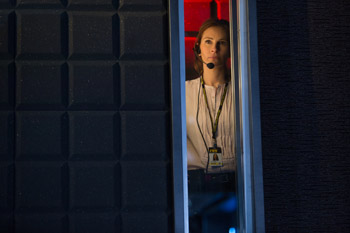 In taking over Gates' show, he sets in motion a crisis that unfolds in real time, on live television. 'That was fun for us," says producer Grant Heslov. 'We've become almost numb to the stuff we see on TV and the internet, and by having this take place on live TV was a fun way to comment on that."
In taking over Gates' show, he sets in motion a crisis that unfolds in real time, on live television. 'That was fun for us," says producer Grant Heslov. 'We've become almost numb to the stuff we see on TV and the internet, and by having this take place on live TV was a fun way to comment on that."
Gates begins to talk to Kyle – at first, to simply try to prolong his own life, aided by Patty, who remains a calming presence in the control room. 'Kyle doesn't know that Lee is talking to Patty through his earpiece the whole time," explains Grant Heslov. 'From a dramatic standpoint, it's a great device, and I think it was fun for George Clooney and Julia Roberts to play as actors."
Later, as Gates and Patty try to work out what's happened, they become genuinely moved by Kyle's pain; they rediscover some journalistic drive and bust open a Wall Street conspiracy that goes well beyond these three people.
'What was really refreshing was to do a story that was set in Wall Street, but wasn't about all of that," says Alameddine. 'It was about three people coming together from opposite sides of the coin. This bombastic, superficial personality, by the end, finds a true connection to somebody that he never thought he would."
To inhabit the character of Lee Gates, George Clooney created the irreverent, madcap and larger-than-life reality television show personality. 'Lee Gates is a bit of a showman," says Jodie Foster. 'It was George's idea that Lee Gates should open the -Money Monster' show with a dance. When he first came to rehearsals, he said, -I'm just going to need a half an hour to figure out the dance thing.' And I replied, -I think you're going to need a little bit more.' So, we had the choreographer there and he got into it."
Grant Heslov says that sometimes being a producer is hard work. And then there are times that your producing partner shows up to dance. 'It's just fun to watch, you know?" he says. 'It was one of those times that you get to sit back and relax and watch a performance. To watch him do that ridiculous dance for a couple of days – especially for me, because I've known him so long, and my kids were there, too – we really enjoyed that."
'George Clooney really got into making a complete and total ass out of himself," continues Jodie Foster. 'I do love that about him. There's something about the absurdity of seeing this middle-aged white guy walk on and do this like crazy hip-hop dance…You can't help but laugh, and think his character is a buffoon."
The idea that the entire crisis unfolds on live television was another intriguing aspect for George Clooney. 'I grew up in live TV – every day of my life for my first 16 years was live TV, because my father had a live variety show and did the news live," says George Clooney. 'Later, I sort of forced NBC to do a live episode of -ER,' and I did -Fail Safe' as a live production. This was before other shows started to do really risky television; I thought the only thing that TV could do that films couldn't was live. It's flying without a net; that's exciting."
'I had worked with George Clooney on Up in the Air, and there's a similar aspect to his character in that movie and this one," says Dubiecki. 'Both characters could have been unlikeable, one because he's flying around the world firing people, the other because he's become so cynical about the stocks he's hawking on his show. But the incredible thing about George as an actor is the brilliant way he embodies these characters and makes them likeable. As the character changes, he takes the audience with him."
Julia Roberts re-teams with George Clooney as Gates' producer/director, Patty Fenn. Julia Roberts describes Fenn's relationship with Gates as one of love/hate. 'He's her wild card, and she is just trying to keep the chaos controlled. She never knows what he's going to do," explains Julia Roberts. 'There are aspects of their relationship where they're a good working team, and then parts of it where, she's just gotten fed up, and would prefer to work in a place that makes one hundred percent sense to her. At the same time, she finds an enormous amount of joy because they're opposites, and whenever you find your polar opposite, it's intriguing."
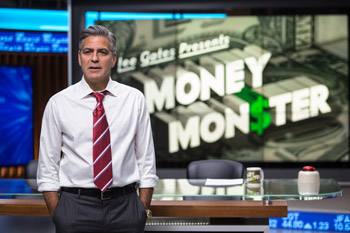 The real-life friendship between Julia Roberts and George Clooney contributed to the on-screen chemistry between Fenn and Gates. 'George Clooney and Julia Roberts know each other, and care for one another, and have this instant, interesting chemistry that I didn't have to do anything for. It just exists," explains Foster. 'The two of them felt incredibly close to each other. They have this intensity, this connection and this communication that's from this organic intimacy between friends."
The real-life friendship between Julia Roberts and George Clooney contributed to the on-screen chemistry between Fenn and Gates. 'George Clooney and Julia Roberts know each other, and care for one another, and have this instant, interesting chemistry that I didn't have to do anything for. It just exists," explains Foster. 'The two of them felt incredibly close to each other. They have this intensity, this connection and this communication that's from this organic intimacy between friends."
'George Clooney and I are good friends, and we understand each other really well," adds Julia Roberts. 'We've found the perfect balance of me being here to support him, and to create our scenes together, and to understand the vibe and the pace, and how we want to create these people together."
Julia Roberts was intrigued by the real-time, ticking-clock nature of the scenario. 'Certainly, any time, as an actor, you have a ticking clock, that is a great advantage to know that there isn't any time to waste," she says. 'It's about problem-solving and being clever because nobody saw this situation coming."
Taking the role of Kyle Budwell, the ordinary man turned to desperate measures following a big-bank fiasco that costs him his entire life savings, is Jack O'Connell. The breakout star of Unbroken, O'Connell portrays Kyle as a good, decent, hard-working young man who cracks under the pressure of financial ruin. 'Kyle is a working class guy who believed that if he did the right thing and worked hard, that somehow he'd be able to have something in his life," explains Jodie Foster. 'He inherits some money, and tries to invest it as intelligently as possible, but ends up losing it all at the hands of something out of his control. The only thing he has in the world suddenly disappears into thin air, and he doesn't know how it happened. Kyle can't accept that. He can't accept that he did everything right, and yet, he's supposed to just walk away. Kyle refuses to accept failure and move on – instead, he chooses to fight back."
'I empathize with him," says Jack O'Connell. 'I think his unfortunate situation is quite relevant and something people can relate to. Still, no one would sympathize with the actions Kyle takes."
Desperate, and turning to violence to levy responsibility for his injustice, Kyle sets his sights on Lee Gates and Walt Camby, the CEO of Ibis Clear Capital. 'Kyle goes to the -Money Monster' set thinking that he's going to see the two biggest culprits of his demise: Walt Camby, played by Dominic West, who is the CEO of the trading fund, and Lee Gates, who told his viewers with much fanfare to invest in Ibis Clear Capital," explains Jodie Foster. 'He feels like they're in cahoots and he's going to hold them accountable."
'Kyle continues to ask the hard questions that nobody's asking," says Jodie Foster. 'He refuses to turn a blind eye away from what happened. He knows that he's not going to get his money back, but he will get answers by any means necessary."
O'Connell sees his character as a victim of a financial system lacking the appropriate safeguards to protect the market from manipulations and malfunctions. 'It would be easy to write Kyle off as a villain. It is extreme to threaten lives, but I feel he was pushed past the breaking point," explains O'Connell. 'What Kyle has done is out of desperation, and my hope in portraying him is that will come to understand what drives him to the breaking point – though he'll pay the ultimate price for his actions."
In the course of the film, Kyle becomes the catalyst for Gates' own change. 'True to form, Gates' first response to this threatening situation is to try to manipulate Kyle," explains Jodie Foster. 'When he realizes that all of his old ruses and all of his old scripts of manipulations are not going to work, he is forced to face the harsh fact that he's been unconscious, asleep at the wheel, and that he can no longer afford to be complacent while lies are being told."
To fully embody Budwell, O'Connell needed to tap into his own raw, visceral emotion. 'Kyle is all heart. He makes rash, emotional decisions," explains Foster. 'Kyle is, at times, unstable and hard to take. But, there are other moments where he's just a little boy, and you want to put your arms around him, and tell him it's going to be okay. And Jack had to create Kyle based on a range of fluctuating feelings."
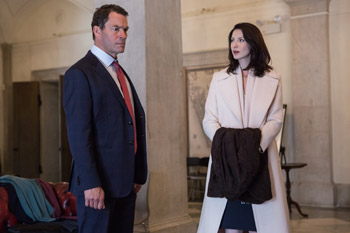 'Jack just grabs you and he doesn't let go," says Alameddine. 'He's that great blend of strength and softness. Even though he's doing something very unlikeable, he's doing it because he wanted to be heard. Jack makes you want to feel something for him, to connect to his message in some way."
'Jack just grabs you and he doesn't let go," says Alameddine. 'He's that great blend of strength and softness. Even though he's doing something very unlikeable, he's doing it because he wanted to be heard. Jack makes you want to feel something for him, to connect to his message in some way."
Jodie Foster found O'Connell's dedication to his craft truly admirable. 'Jack is just such a wonderful gift of an actor," says Jodie Foster. 'I wish I approached acting that way when I was young with such incredible commitment and passion. I just love that about him – He's able to just give so much. He just never stops giving."
As Chief Communications Officer of Ibis Clear Capital, Diane Lester, played by 'Outlander's" Caitriona Balfe, is the spokesperson for the company embroiled in an unprecedented financial crisis. 'Diane's very interesting. She's quite an ambitious person, and her job is very important to her, but she has a lot of integrity," says Caitriona Balfe. 'There's a sense of naïveté to her, which I quite liked. She believes in the company that she works for, and feels that they're doing a lot of good. She has no reason to question what she's being told. But once she begins to grasp the full picture of the consequences of her job, and how it affects other people, she very quickly becomes a truth-seeker."
The cast is rounded out by 'Breaking Bad's" Giancarlo Esposito, who takes the role of Marcus Powell, the police captain trying to defuse the situation, and 'The Wire's" Dominic West as Walt Camby, the CEO of Ibis Clear Capital, the company whose sudden stock plunge has incited Kyle to action.
About The Production
In most major films, a director is shooting with one camera (or some other small number), all shooting in the same format. In directing Money Monster, Foster faced a new challenge. 'The -Money Monster' show, itself, is shot by four different broadcast cameras, plus we, as filmmakers, had to film as well."
Simple enough – except that film cameras and broadcast cameras are incompatible. While capturing the 'broadcast," the film cameras had to be out of the way. The solution came with careful planning.
'The broadcast takes place in real time and in multiple locations. If somebody is talking on the monitor, the person he is talking with has to answer him in exactly the same rhythm," continues Jodie Foster. 'And so, Matt Libatique, the Director of Photography, and I sat around with our stick figures, figuring out when we would be in different places. After a while, it became intuitive as to what camera we needed to be on – this moment should be on a television screen and that moment on a film camera, and so on. When we put it all together, it became seamless."
In using different cameras, Jodie Foster could create two distinctive emotional aesthetics. 'The film camera gives a dark, moody emotion that you can't get any other way, and the broadcast camera gives you a bright, cheery perspective," explains Jodie Foster. 'When we go back and forth between the two cameras, there's a tension and energy that comes from the audience having to constantly shift between what's real and what's fake."
'The broadcast cameras gave it the feel of a live television show, the through-the-looking-glass version that Julia Roberts's character sees on the monitors, but those cameras don't really capture the drama," says producer Daniel Dubiecki. 'The film cameras get right there next to the characters, and they capture the emotion."
'One fun fact is that a couple of the camera guys in the movie were actually real-life camera guys," says Alameddine. 'Jodie Foster wanted to make sure that whoever was operating the camera could make it look real."
But again, came the problem of being unable to shoot with both kinds of cameras simultaneously. George Clooney says that, in effect, the solution was that most of the film – the entire section that takes place on the TV show soundstage – was shot twice: once from the perspective of the broadcast cameras, and again with the film cameras. 'Nine full pages of monologues a day," says George Clooney. 'You do it all, and then you do it all again for the other camera."
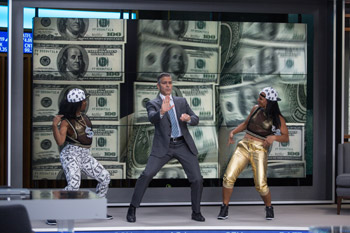 'The entire stage of -Money Monster' was shot completely in order, and that's almost the full length of the movie," says Jodie Foster. 'These two characters start out on day one of filming, meet each other for the first time, and as each subsequent scene unfolds, they change and their relationship grows."
'The entire stage of -Money Monster' was shot completely in order, and that's almost the full length of the movie," says Jodie Foster. 'These two characters start out on day one of filming, meet each other for the first time, and as each subsequent scene unfolds, they change and their relationship grows."
Jodie Foster also had to factor in the 3D graphics for the -Money Monster' show. 'We had five guys who did all the graphics and each one had their own area of expertise," says Jodie Foster. 'They were incredibly calm and collected. We were able to have it all happen on screen exactly as it would happen in live television."
The film's other central location for the bulk of the film is the 'Money Monster" show's control room, where Patty directs the show and tries to help keep Lee alive. 'We shot at CBS studios in the upper West Side of Manhattan," says Jodie Foster, noting that it is a real-life control room that could handle a 'Money Monster" type of broadcast. 'We wanted to keep the certain level of reality found in live television, and capture the intensity and obsession that happens in that moment."
Of course, there were challenges. 'One of the more difficult elements of making this movie was this fifteen-by-eight-foot control room," continues Jodie Foster. 'It was very difficult for our camera to get in there."
'We had a professional technical director teach Julia how to be a real producer," adds Jodie Foster r. 'She's quite proud of the fact that he thinks that she did a great job, and it really looks like she knows what she's doing."
To create a distinction between Money Monster the film and 'Money Monster" the television show, Kevin Thompson, the film's production designer, created a set within a set. 'It was always important for Jodie Foster to see the set of the -Money Monster' television program itself – the set of the show that viewers on TV – and also the backstage aspect of the set, with the broadcast cameras that would be shooting the show," explains Thompson. Naturally, the film cameras would be behind all of these, shooting the motion picture. 'When designing the set, we started with the center, and then created a shell for all the action. We built a broadcast stage inside a sound stage, and then built the -Money Monster' television show set inside that stage."
In the end, Thompson says, the art department was able to design a set that provided ample visual contrast and heightened tension. 'The complete set design has two different looks: one for broadcast, with bright colours and nice, even exposures, and the other for film, with a more moody atmosphere and different angles," continues Thompson. 'When you cut those together, you can create some tension and dynamic that you don't normally see."
In building the 'Money Monster" television set, Thompson wanted it to resemble a high-caliber production on a large financial news network. 'I didn't want the show to feel too small-time," explains Thompson. 'Gates is a larger-than-life character with international reach – so the set needed to feel like it was on a major network with a global broadcast platform."
To make the set as realistic as possible, Thompson researched and incorporated various elements found in financial news programs. 'Jodie Foster and I talked about color and how a lot of these shows are all very bright blue," says Thompson. 'We wanted -Money Monster' to be a combination of that blue with the color of money, and so we have a background that is greenish yellow. We have one large screen so that the whole frame could be filled up with our character in front of a projection. There are tickers, touch-screens, monitors for interviews, graphics and stock tips. For the graphics, we created a library of screen savers to project as needed."
More importantly, the 'Money Monster" set had to be versatile and large enough to give George Clooney mobility. 'We wanted to have a set with multiple entry points so that Gates could come in from different places so that the show isn't always the same," explains Thompson. 'Also, there needed to be plenty of room for Gates' choreographed dance routines."
Partway through the film, the action moves to the headquarters of Ibis Clear Capital, the company whose sudden stock plunge has set the events of the film in motion. 'We felt it was important that the location of Ibis Clear Capital should have a modern architecture – all glass, light colors and very bright," says Thompson. It needed to be a symbol of wealth, power and technology."
This is contrasted with the climax of the film, which takes place in the streets of the financial district of lower Manhattan. 'When the characters leave the -Money Monster' set, they walk through the financial district with its neo-classic architecture, built in a time when the financial markets were based on stable business models not technology," continues Thompson. 'And then, we culminate in Federal Hall, which is where George Washington was inaugurated as America's first president. Its historic setting with neo-classic columns, beige colored stone, and monumental scale, creates a feeling that the characters are going back in time, when the model for investing was different."
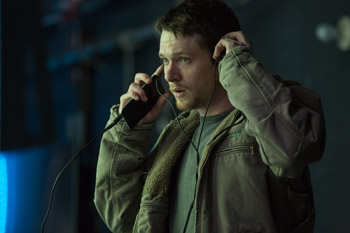 Connecting all of the pieces of the Money Monster puzzle into a tight cohesive narrative is editor Matt Chessé. 'It's a challenging story to put together," says Chessé, who not only cut together the film, but the 'Money Monster" show itself. 'There was so much footage to work with," he says. 'There were three cameras shooting the -Money Monster' show that I then had to edit to be viewed in several different ways: the public watching the hostage situation unfold; from Julia's character's point of view in the control room, receive it as a live moment; and, selecting the material to make the television show."
Connecting all of the pieces of the Money Monster puzzle into a tight cohesive narrative is editor Matt Chessé. 'It's a challenging story to put together," says Chessé, who not only cut together the film, but the 'Money Monster" show itself. 'There was so much footage to work with," he says. 'There were three cameras shooting the -Money Monster' show that I then had to edit to be viewed in several different ways: the public watching the hostage situation unfold; from Julia's character's point of view in the control room, receive it as a live moment; and, selecting the material to make the television show."
'I also had to put the Money Monster movie together," continues Matt Chessé. 'I had so many options. It's like a five pronged crown, and I have three prongs of the five that I can maneuver between at any given moment. There are a lot of choices."
To construct the live television sequences, Matt Chessé employed a reactionary, fast-paced editing technique. 'I think cutting in live television is a different art form," explains Matt Chessé. 'It's very immediate. You have to be ready for the moment. You have to think on your feet, and respond to what's happening in front of you – It's a very gut level response to the imagery. When I'm cutting the footage to reconstruct a live television show, I can't approximate a cut that's too pre-meditated. I have to pretend that Lee has surprised me by going from Camera A to Camera B. I can't anticipate his move. I have to respond to that move, and switch to Camera B. I have to factor in a little bit of a lag time. Essentially, when I am dealing with a live television cut, I have to pretend that I don't have the amount of self-reflexive time that I normally have in the editing room."
For Matt Chessé, the most important element of the editing process is the acting. 'With this film there are lots of opportunities to do cool cutting, but from where I come from, editing is very much about the actors, the performance, the dialogue as well as the looks and responses of the people," explains Matt Chessé. 'In addition to nailing the energy, pacing and tautness of the story, I wanted to make the most out of pushing the performance as far as I could."
Foster turned to Susan Lyall, her longtime costume designer, to create the look of Money Monster's characters.
For Lee Gates' overall look, Susan Lyall wanted his appearance to reflect his on-air personality and financial success as well as compliment the aesthetics of the 'Money Monster" set design. 'I like to sum up Lee Gates' appearance as glitzy elegance," says Susan Lyall. 'He wears a silver toned herringbone weave suit with a pronounced stripe and his shirt and tie contain stripes as well. This is not an accident – Gates is someone who can push it a little bit. It's subtle, but it is a little showman-like, and speaks to the financial world."
'Lee's environment on the stage was of paramount importance to choosing what he should wear," adds Susan Lyall. 'I was around Kevin Thompson, the production designer, as his team designed the backdrops. The color on set is very controlled, and when you look at what Lee is wearing, the colors all belong in the same family. They all work together very well."
On the completely opposite side of the spectrum is Patty Fenn, whose look is understated, yet professional. 'I saw Julia Roberts' character, Patty Fenn, as a New York City woman who dresses for herself," says Susan Lyall. 'She's not trying to impress anyone. She knows who she is, and she is very beloved by her crew, and her clothes impart that. She has a certain downtown chic that is cool and comfortable."
Money Monster
Release Date: June 2nd, 2016
Have You Seen This?
MORE
- Mission: Impossible Fallout
- Glenn Close The Wife
- Allison Chhorn Stanley's Mouth Interview
- Benicio Del Toro Sicario: Day of the Soldado
- Dame Judi Dench Tea With The Dames
- Sandra Bullock Ocean's 8
- Chris Pratt Jurassic World: Fallen Kingdom
- Claudia Sangiorgi Dalimore and Michelle Grace...
- Rachel McAdams Disobedience Interview
- Sebastián Lelio and Alessandro Nivola...
- Perri Cummings Trench Interview

